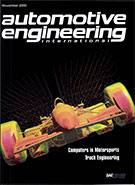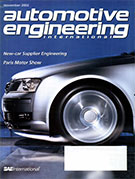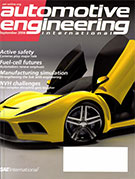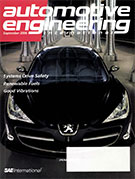Magazine

MOMENTUM: MARCH 2020
2020-03-01
Making sense on sensors AutoDrive Challenge team from North Carolina A&T State University gets the most out of its few sensors. Victory at last The first Formula SAE win of Polytechnique Montreal: why keeping it simple and being prepared was the key. Keeping it light Gram by gram, students at Ningxia University carve weight off their SAE Aero Design East plane to win the 2019 competition.



















